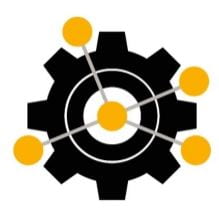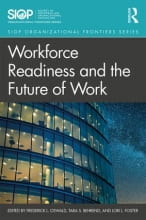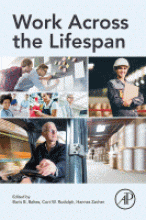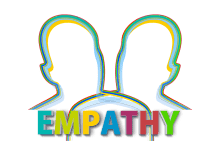Date: Friday, February 1, 2019
By: Justin Sabree
The Industrial-Organizational Psychology program at Georgia Tech recently hosted a series of speakers on modern team research in a wide variety of contexts. Below, we briefly outline these talks.
Scott Tannenbaum, President and Co-Founder of the consulting firm, gOE (the Group for Organizational Effectiveness) discussed his experience solving issues for over 500 organizations globally, including more than 30 Fortune 100 companies. Tannenbaum has noticed that almost every organization wants to be better at collaboration and lauds teamwork. This trend has only intensified as the demands to collaborate to solve multi-dimensional problems have increased. However, despite this strong value of teamwork, many workers report that their own teams perform sub-optimally and have misconceptions about what teamwork actually is. Tannenbaum explained that many organizations view teamwork as simply getting along and consequently dissociate it from employee performance and business goals. This dissociation inadvertently downplays the importance of teamwork within an organization. To combat this problem, organizations may consider tying employees’ teamwork ability to their performance assessments and their ability to achieve business objectives.
Before team issues can be solved, organizations need to be sure that the problem truly is team-related. For instance, if a team is underperforming because of general communication issues within that team, then a team-level intervention is appropriate. However, if a team refuses to communicate due to a specific individual, such as a dismissive leader, then the solution should focus on performance management of that individual as opposed to involving the entire team. On the other hand, if many teams fail to communicate effectively, then the problem might lie at a higher level of analysis, and an organizational intervention may be necessary. Ultimately, in order for an intervention to be effective, it must be at the same level of analysis as the problem that it hopes to address.
Greg Ruark, team leader for basic research at the Army Research Institute (ARI), discussed exciting advances in teams research being conducted with the United States Army as well as the future of the field. Ruark explained that, unlike teams in traditional organizations, many teams in the Army serve on two-year rotations, and the individuals on these teams frequently move from different locations. Due to most members being new to a location, team members typically spend a larger amount of their non-work hours together than team members in traditional organization settings. As a result of this reliance on team members outside of work, maintaining positive interactions during non-task related situations is a pressing topic of current research.
Moving forward, Ruark explained that an important frontier for future teams research is how to adapt to new domains of war, such as cyberspace. Traditionally, the Army’s culture has been centralized with a strong top-down influence, but while this set up has been successful for hundreds of years, future attacks may require quicker responses than this design may allow. This may alter the nature of the multiteam system that is the Army.
Lauren Blackwell Landon, Team Risk Portfolio Scientist at NASA, spoke about cutting edge research being conducted with astronauts in preparation for the Mars Mission. This preparation starts with selecting the 12 best candidates out of 18,000 applicants. In a recent job analysis conducted at NASA, the top five needed-at-hire traits for prospective astronauts were sociability, adaptability, motivation, communication, and teamwork. Three of these traits underscore how astronauts must work and live well with others. Due to astronauts cohabitating, group living skills, such as tidiness and sleeping schedule, predict team performance among teams of astronauts much more than would be expected from traditional teams research.
Landon also explained that nuance exists in the desirability of the degree to which astronauts exhibit traits. For example, certain traits, like motivation and emotional stability, have fairly straightforward guidelines: the higher the scores on these traits, the better the team will perform. On the other hand, traits like extraversion seem to be deleterious to team performance if they are present in too high or too low of a quantity. If an astronaut is too reclusive, she may not bond with the team members. However, if an astronaut is too extroverted, he may annoy his fellow team members or fail to function optimally in a relatively isolated environment. Though NASA has a clear view on the ideal range of traits for individuals, Landon mentioned that much less is known about what the ideal composition of traits should be within a team. For instance, the teams literature does not suggest if a team with two introverted members and one extroverted member will perform differently than a team with two extroverts and one introvert.
Though gaps exist about the ideal trait combinations among team members, NASA does focus on other team composition aspects. When composing teams, NASA strategically avoids building teams that have many fault lines, such as gender, profession, or ethnicity. Despite team diversity frequently resulting in positive outcomes, too many surface level fault lines can lead to conflict and subgroup formations.
Steve Fiore, professor at University of Central Florida, spoke about the importance of interdisciplinary science teams and how to study them. Nature’s problems frequently cut across disciplinary borders. Fiore argued that researchers are well-positioned to overcome barriers that have been hindering interdisciplinary scientific research for more than 40 years. When breakdowns occur, the problem should be identified as either relating to issues with task work or teamwork. In regard to scientific teams research, task work is the actual work being completed—hypothesis generation, data analysis, writing up results—and has frequently been the focus of research. In contrast, teamwork involves the attitudinal, behavioral, and cognitive aspects of working with other people. Ultimately, breakdowns in interdisciplinary scientific research can occur due to either type of work, but some common reasons for these breakdowns are from goal misalignment and unclear boundaries.
To overcome these potential degradations in performance, Fiore presented three crucial aspects of teamwork. First, interdisciplinary teams must create a climate of psychological safety. By doing so, the team will foster increased innovation due to members feeling more comfortable to share novel ideas. Second, team members should listen actively and possess assertive communication styles. Active listening facilitates positive social relationships and clearer understanding of members’ goals and intentions. On the other hand, assertive communication mitigates the potential for members’ diverse expertise to be overlooked. Finally, teams need well-defined shared mental models, so each member knows the strengths of each member as well as a clear vision of the team’s goal.
Melissa Harrell, People Analytics Manager at Google, spoke about the history of Google’s People Operations and the pioneering teams-related research that they conduct. Despite now being well-known for their people-centric culture, founding Googlers initially questioned if team managers even mattered. A series of rigorous studies at Google supported the current science of leadership: effective managers can develop their team members and also ensure their team completes their assigned tasks. The question evolved to what parts of managing could be substituted with data analytics. With this aim in mind, People Analytics eventually created an algorithm that predicted who would be promoted, sometimes achieving up to 90% accuracy and reducing 30% of the time that managers needed to make these promotion decisions. Despite the accuracy of the algorithm and time savings, managers did not respond favorably to this change. As Harrell explained, the algorithm took away the autonomy in these important people-related decisions, and Google eventually stopped using it. This impactful moment in the company’s history led to their current stance: people should not be taken out of people decisions.
With this philosophy, data analytics supplements, but does not replace, the human decisions needed to improve Google’s workforce. Furthermore, this change in perspective has allowed the People Operation’s team to be successful in their teams research endeavors. For instance, Harrell spoke about Project Oxygen, Google’s study into what makes an effective team. Most notably, this project underscored the importance of teams being dependable, having clear structure, and feeling psychologically safe.








